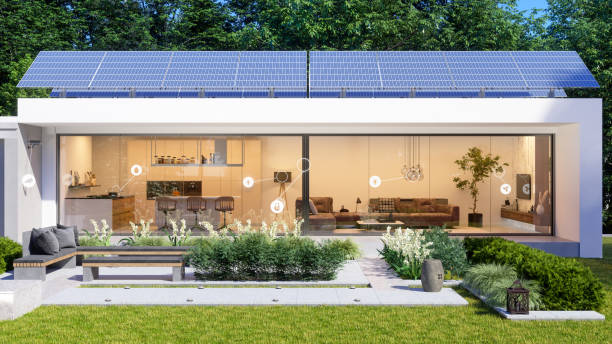
Power electronics are essential for the safe and efficient operation and grid integration of solar photovoltaic systems. Power electronics innovations can enhance the functionality of PV systems and improve grid control capabilities. This will lead to a longer lifetime for PV systems and lower costs. The typical lifespan of these devices, however, is just ten years. Customers must replace the machines long before replacing the solar panels. The cost and performance of solar systems can be significantly improved by extending the life expectancy.
The main power electronics component in a PV system is the inverter. It converts direct electricity generated by solar panels into alternating current, which is used on the U.S. electrical grid. Inverters are made from several component technologies–passive filters, active switches, thermal management, and packaging–that experience wear and tear due to everyday use, faults, and other out-of-the-ordinary occurrences like electromagnetic disturbances. Inverter performance and its lifespan are drastically reduced, resulting in higher costs and the need for part replacements. The solar panels available today can last 20-30 years. It’s time to upgrade their power electronics counterparts to make PV systems even more durable.
The U.S. Department of Energy Solar Energy Technologies Office has announced new projects that explore electronic power concepts and device design for solar. These projects could extend the lifetime of power electronics and reduce the levelized cost of electricity (LCOE) of solar systems, helping the solar industry to reach $.03 per kilowatt hour by 2030. These projects use a variety of approaches to reduce costs and improve reliability.
Advanced component technologies and circuit designs can make inverters more efficient and cost-effective.
Inverters that are designed modularly and focus on improving individual components will improve PV system reliability and extend its lifetime. Modular pieces can be easily replaced and are interchangeable. The inverter can be upgraded to improve performance by adding storage or energy.
Inverters can operate at higher temperatures with less power loss. This leads to fewer power failures and longer system lifespans.
The new funding program will use these strategies to develop inverters with an efficiency greater than 99 percent that can last more than 30 years in the field.
Power electronics have been used in PV systems to convert energy but can provide additional functionality and controls. Inverters can “learn” skills that help grid operators operate more efficiently and faster. This could make solar a flexible, detachable resource for grid operators.
Solar PV inverters will be able to provide grid services in the future. This includes regulating voltage, and frequency, detecting cyber- and physical threats, and controlling the power flow of solar and storage systems to respond to grid disruptions and power outages. These solutions use customer-owned systems to add value without disrupting normal operations. They increase the value of energy generated over the lifetime of a PV system, which contributes to lowering LCOE.
These projects will be implemented over the next three-year period to extend the lifetime of PV systems, improve solar’s value in the grid, unlock new solar resources, and lower costs for residential and commercial solar installations.
